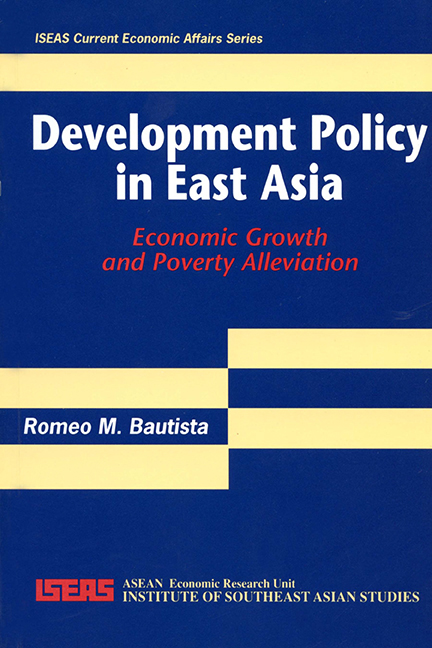Book contents
- Frontmatter
- Contents
- List of Tables
- 1 Introduction
- 2 Measures of Development Performance
- 3 Analytical Considerations
- 4 Economic Conditions in 1965
- 5 Role of Development Policies
- 6 Some General Equilibrium Estimates of Policy Effects
- 7 Redistributive Policies
- 8 Concluding Remarks
- Notes
- Bibliography
- The Author
- Frontmatter
- Contents
- List of Tables
- 1 Introduction
- 2 Measures of Development Performance
- 3 Analytical Considerations
- 4 Economic Conditions in 1965
- 5 Role of Development Policies
- 6 Some General Equilibrium Estimates of Policy Effects
- 7 Redistributive Policies
- 8 Concluding Remarks
- Notes
- Bibliography
- The Author
Summary
The problem of poverty, both in absolute and relative terms, became a major policy issue in developing countries (LDCs) during the 1970s, following two decades in which the predominant policy objective was rapid economic growth. The observed deterioration of employment opportunities and income distribution accompanying seemingly satisfactory gross national product (GNP) growth rates for many LDCs led to a greater articulation of distributional concerns by development economists. “Trickle-down” theory fell into disfavour, and it became fashionable to recommend policies and programmes intended to promote a wider sharing in the benefits of economic growth. Direct poverty redressal, participatory development, rural public works, appropriate technology, integrated rural development, and meeting “basic human needs” were among the favoured policy approaches and goals.
In the early 1980s the development research and policy agenda began to be preoccupied by problems of macroeconomic stabilization and structural adjustment, nudging aside distributional and poverty issues. These problems stood in the way of economic recovery from the external shocks of the previous decade and ill-conceived policy responses that drove many LDCs into heavy foreign borrowing and eventual debt-payment crisis. More recently, poverty concerns have been raised in those countries as low-income groups appear to have suffered most from the stabilization and adjustment programmes being implemented. Once again, the issue of poverty is in the forefront of the development policy agenda.
It is clear, however, that there is a significant difference in the context in which poverty issues need to be examined in the two cases. The recent concern raises the problem of how to lift the heavy burden on the poor during the short- run period (one year to five years?) of stabilization and adjustment necessary for the economy to resume stable growth. The earlier policy concern pertains to the longer-run aspect of economic development and poses the challenge of how the poor can share equitably in the development benefits.
The development experience of market-oriented economies in East Asia during the last quarter century is not particularly relevant to the empirical analysis of the effects of macroeconomic stabilization and structural adjustment on the poor.
- Type
- Chapter
- Information
- Development Policy in East AsiaEconomic Growth and Poverty Alleviation, pp. 1 - 2Publisher: ISEAS–Yusof Ishak InstitutePrint publication year: 1992



